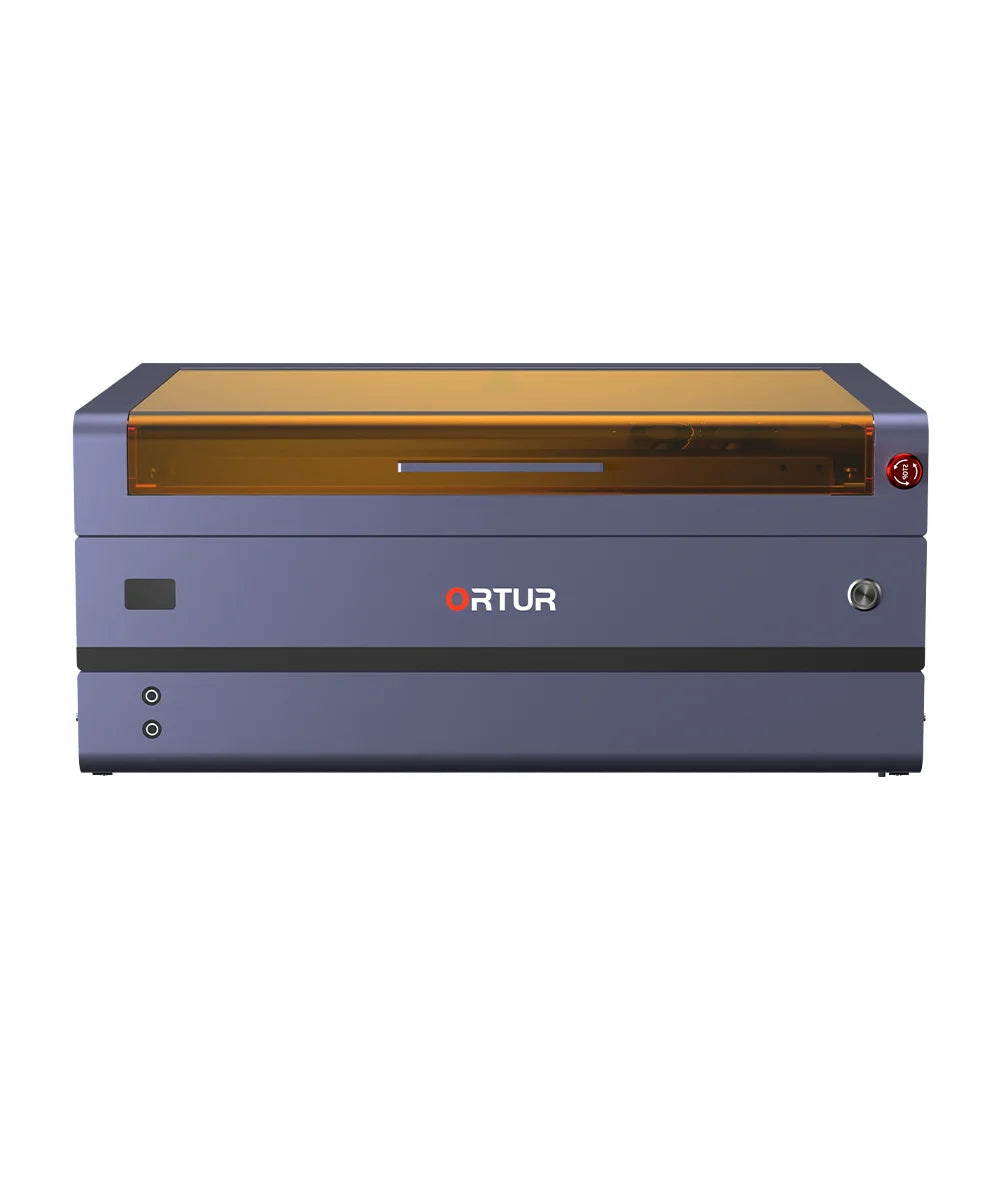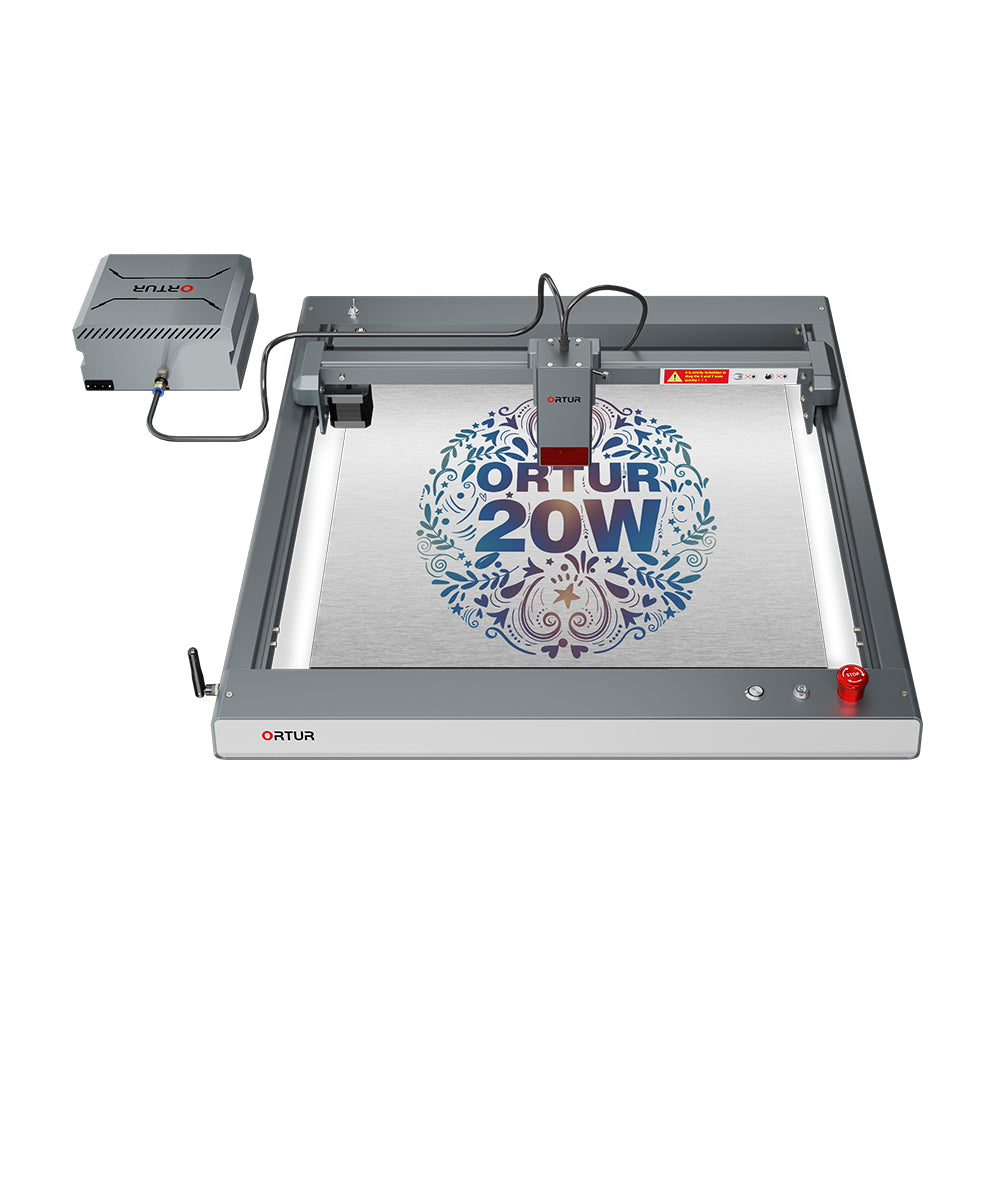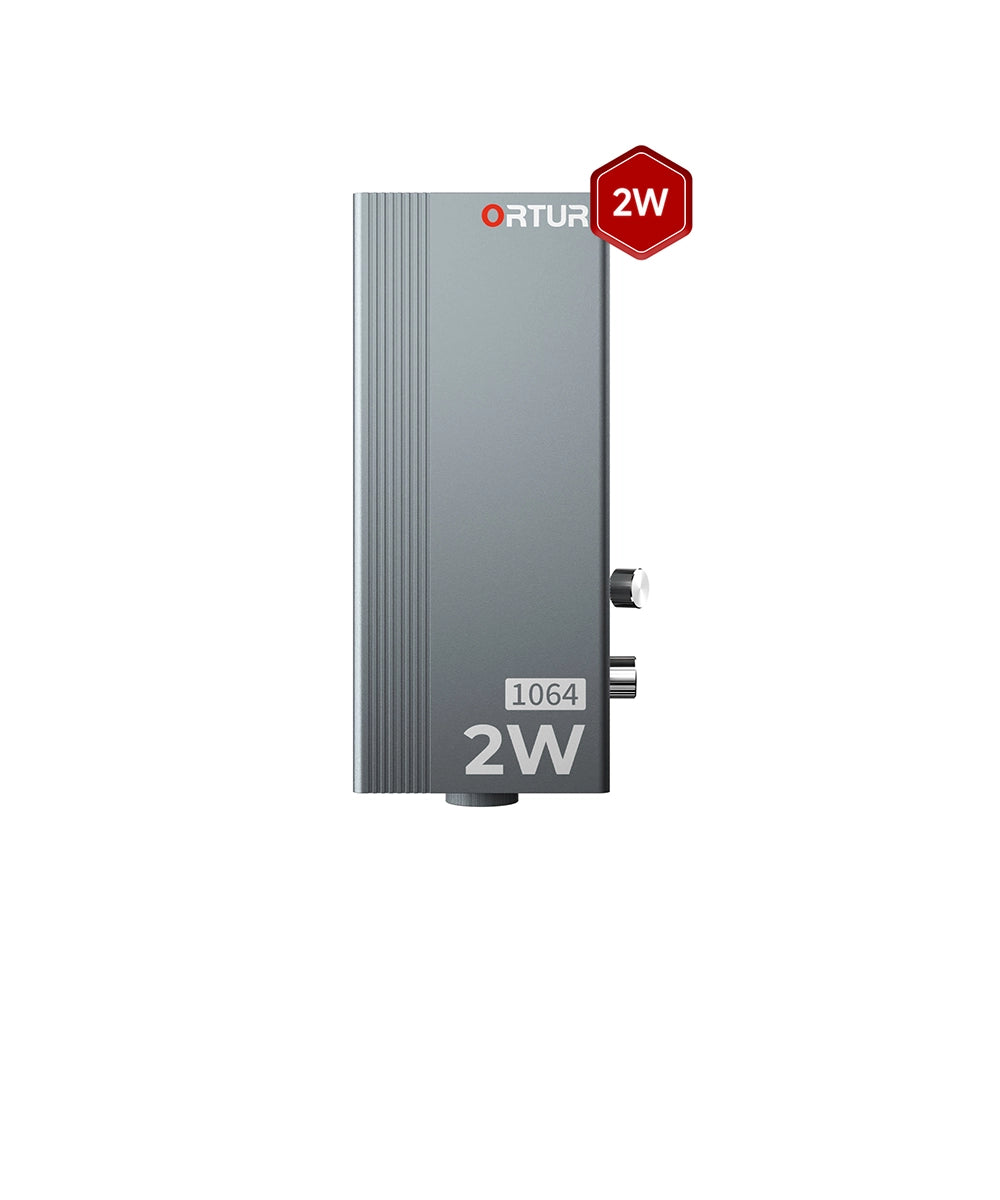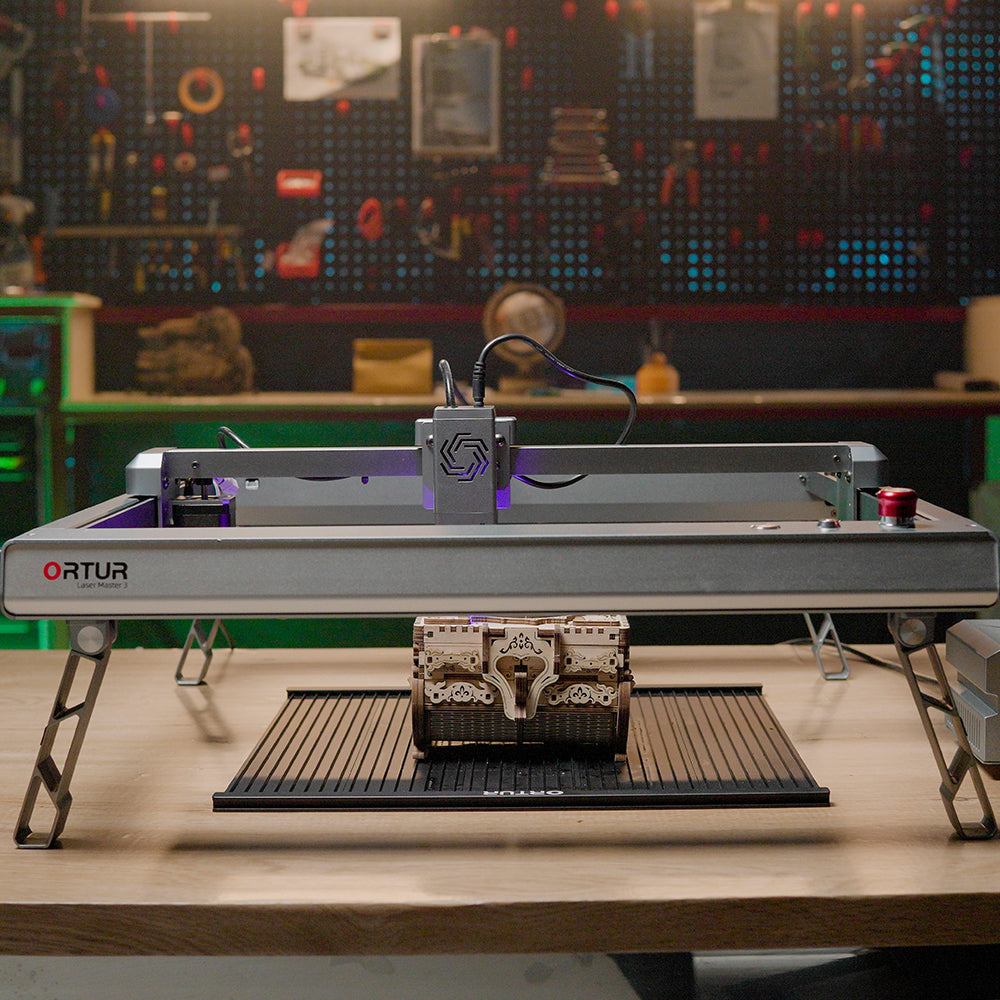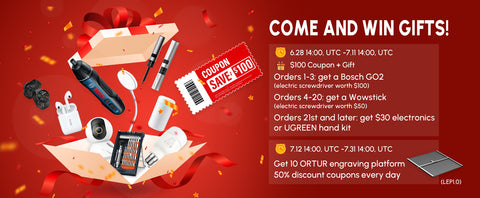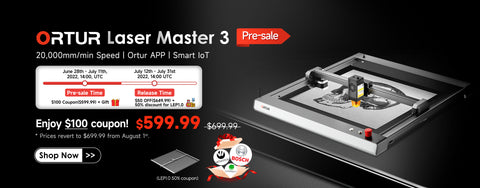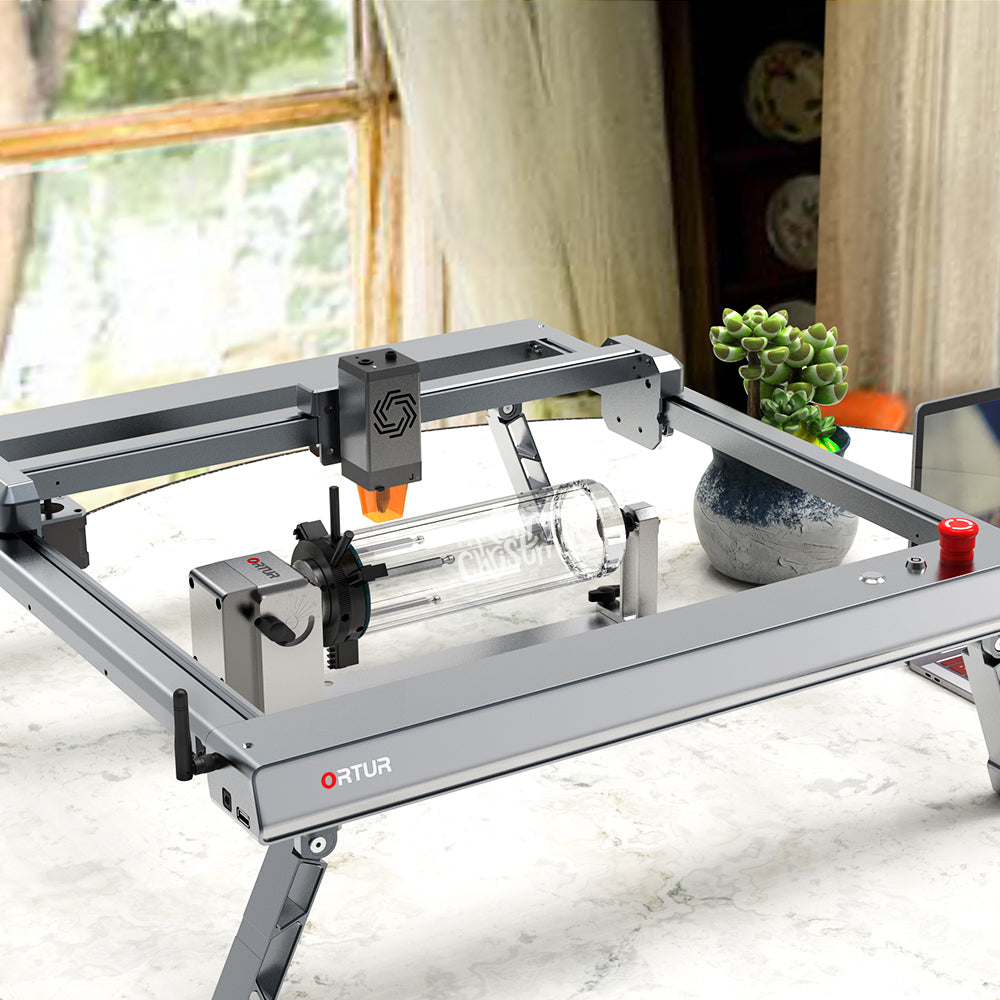Ortur LM3 – The improvements that matter!
New benchmark of laser engraving
Can the Ortur Laser Master 3 truly engrave at speeds of 20,000mm/min?
Yes it can! And this was achieved by using 4 main changes in design
- First of all, the Ortur Laser Master 3 was redesigned to have its mechanical structure center of gravity as low as possible. Ultimately, there is a substantial reduction in the frame harmonic vibrations.
- Secondly, the LU2-10A 10W laser module that powers the Ortur Laser Master 3 is extremely light. Only 235 grams, maintaining high power delivery and cooling performance.
- The Ortur Laser Master 3 motherboard and firmware employs G-code streaming optimization, allowing the transfer of data to break the old limitations of 6000mm/min.
- TMC2209 stepper driver chips are used on the Ortur Laser Master 3. These high performing drivers allow for high torque, silent operation and no switching homing.
What does 20,000mm/min speed engraving actually mean?
Ultimately it will save time. In combination with the 10w true optical power of the LU2-10, the Ortur Laser Master 3 can double the work output possible with a Laser Engraver. If you're using an laser engraver on a commercial say, you will be able to serve twice as many customers in the same amount of time. Time becomes actual Money!
As an example, it takes 30 minutes to engrave a black and white image of about 10cmx10cm at a speed of 6000mm/min. The same image engraved at max speed with the OLM3 can be finished in roughly 10 minutes.
Many machines also advertise speeds of 10,000mm/min and 20,000mm/min, is that the same?
The true figures of speed must be calculated when considering speed settings but also the acceleration settings used on the machine firmware. Many machines allow 10,000mm/min to be used, however their acceleration figures are so conservative that the exact actual measured speed when engraving will not surpass real 6000mm/min. The real test has to be done with a watch and a true time metering of time per 10cm^2.
The same is often employed on metering power values on Laser Modules. The important figure is the optical output at 100% power, and not the electrical input value used by the module. Where others claim 80, 90, 130W we present our true optical value of power output.
What is a smart laser engraving machine, and the difference between the ordinary engraving machine?
The main difference comes in "ease of use" and Options. Regular engraving machine tend to have the basic functionality, connect via USB and need a computer software to be operated. Although this is perfectly fine, many times alternative work flow options are necessary.
Our Laser master 3 smart engraving machine solves the problem by offering 5 machines in one. Users can still operate normally from USB, use a Phone App, Upload Gcode Via FTP, and more importantly have a full WebUi interface to change and alter all aspects of the machine. From starting engraving to updating and changing firmware settings.
How does the smart laser engraving machine solve the problem of ease of use?
The more important aspect we tried to address with the OLM3 is the different skill levels users tend to have when using their first Laser Engraver. Also their goals.
Some users want to do simple engravings, without multiple layers and complexity. Up to now these users were forced to learn complex and limited software.
Now users can simply use their phone, take a picture, or write text and start engraving in minutes.
For those that want to use their machine at 100%, all the other options remain available. No compromises required!
What is a mobile app with practical value?
Not Every engraving job requires a computer and complex software. Many of our loyal users do on the fly customization for their customers. This can make the Ortur Laser Master 3 a prime portable machine to use on fairs and events. All needed is Laser Explorer, and a compatible Android or iOS phone. From the simplest to the more complex jobs, all can be done at the touch of a phone screen.
What are the improvements in the Ortur Laser Master 3 hardware and firmware?
Time evolved, and the power of the integrated chips did too. Currently the OLM3 is powered by the ESP-Pro-v2.4 motherboard. Powered by an ESP32 chip and a lot of Extended I/O, a reinforced power delivery system and the TMC 2209 Silent Stepper drivers for all 3 axis. This is the eleventh generation motherboard released by Ortur Laser Application Technology Laboratory, with a very mature and solid design.
On top of the hardware, our Latest 2.0 firmware supports the latest IoT technology, allowing better laser engraving protocol standards, image direct engraving, WebUI, multi-language interface, integrated system detection mode, and many other advanced features.
What is the limit-free switch function?
With the latest TMC 2209 stepper driver chips, there is no longer the need for physical limit switches to have consistent and perfect homing operations. On top of that, the operation of the machine will be near silent at low speeds and very quiet at maximum speeds.
What is two-way communication?
The latest ESP-Pro-v2.4 motherboard is designed to have bi-directional I/O interfaces. Not only will the motherboard talk to the machine components, but they can also communicate and report back to the motherboard in their current state. Soon expansion I/O products will be released to give the machine even the power to control the environment around the OLM3.
What are the 5 Ways channels link?
Commonly, laser engravers would use USB Serial port communication. This would require a permanent USB wire connection to a host computer. With the Ortur Laser Master 3, this will be available but be only one of 5 options. The machine will give the ability to engrave from USB, SD card, WebUi, FTP, and App. The machine can connect to your wifi network, or provide itself a WIFI network to be connected to (Access Point mode).
What is the next generation of laser engraving protocol standards?
Compared with the older generation of laser engraving protocol standards, it is 5 times more efficient.
What is a direct image engraving?
Using AI, the OLM3 Firmware will be able to convert and optimize an image directly sent to the machine and automatically generate gcode without user intervention, cumbersome settings or parameters.
What is WebUI?
Your OLM3 will be a machine and a service. A webserver is built in your machine firmware and you will be able to connect to your machine via a standard browser. On your Computer, Chromebook, Laptop, Ipad etc. Any device that has the ability to launch a browser and is connected to your network will be a point of control.
Why are safety features important and are a good benchmark of machine quality of design?
Simply put, with the recent increase in power on Laser modules, the engraving machines are no longer a toy. They are dangerous machines that need to be respected. Having a machine designed with safety first in mind is an important aspect Ortur pursued.
What safety features do a safe laser engraving machine need?
- Emergency switch - One press and the whole machine will stop ALL operations.
- Safety Lock – A Key will lock or unlock the machine. Without this key no operations will be possible.
- Movement Detection – Pan, Tilt, Shock and Position sensors will stop the machine if an abnormal motion of the machine Is detected.
- Laser Exposure and Duration Detection – If the firmware detects that the Gcode sent to it will have the machine use too much power without being moved, it will immediately stop the laser beam and issue an alert.
- Voltage & Current Monitoring – The OLM3 can read, monitor and detect any abnormal behavior of the power delivery system. A drop on voltage of excess power requirements from the machine components will result in a machine halt to keep the components safe.
- Connection detection- A laser engraver can not lose connection to its host streaming channel. If the connection to the host computer/Device is lost the machine will halt operations.
What is a security lock?
After locking the machine, it can ensure that non-authorized persons cannot start the laser engraving machine.
What is pan protection?
The machine during work, if accidentally pushed, will stop the laser so that the laser can hit the non-engraved object.
What is tilt protection?
The machine in the process of work, if accidentally overturned, will stop the laser, so that the laser in the space randomly shoots, hurting people.
What is the exposure duration limit?
If the laser head keeps emitting light without moving, the engraving will catch fire, so the laser exposure time needs to be limited as necessary.
Voltage and current safety quality control system?
If the voltage or current of the external environment is abnormal, it is necessary to stop the working machine to avoid damage.
What is host computer detection?
After the host computer is disconnected, the machine motherboard will take over control of the laser module, stop the laser, and avoid continuous glare leading to fire.
What is an emergency stop switch?
In any emergency, tap the emergency stop switch and turn off the laser for the first time.
How to maintain precision in high-speed engraving?
- High-precision structural parts processed by CNC are required to ensure structural accuracy.
- High subdivision motor driver IC is required.
- Requires a 16-tooth synchrotron wheel that is smaller than the diameter of a normal 20-tooth sprocket.
- Requires a closed-loop belt
- Needs to optimize the motion parameters in the firmware, especially the relationship between the weight and acceleration of the laser module.
- Requires an ultra-fine laser spot brought about by the fourth generation of compression technology
What does precision mean in laser engraving or cutting processes?
In the engraving, it can ensure that the gray level of the photo is highly maintained, and ensure that the line drawing is accurately portrayed.
During the cutting process, precise cutting at the 0.1mm level is ensured.
YRR & Y axis motor transfer switch
There is no need to remove the connections of the Y-axis motor to insert the YRR, and with a single stroke, you can make a conversion between the YRR and the Y-axis motor.
The LU2-10A laser module has a built-in foldable focus rod
Lower the focus bar to focus, lower the laser module to touches material. Fold the focus bar back and its ready to start engraving.
Built-in air-assisted design
As soon as the air tube is inserted into the laser module, it is used. All that’s required is an air source.
Reserve the expansion interface
Optional I/O Components that expand the machine functionality will be added in future.
Optional LEP 1.0 - Laser engraving platform
LEP1.0 can provide suspension support, smoke conduction and fixation for the carving, avoiding the smoke accumulation of smoked yellow carved objects during the use of ordinary honeycomb boards.
Optional ZLD 2.0 - MotorizedZ-Axis Lift (released in August).
With a Z stroke of 50mm, it can be combined with the XY axis to achieve depth and surface engraving, and even thicker material cutting.
Optional OE2.0 - Foldable protective case resistant to high temperature and fire protection (released in August).
Made of fireproof cloth and fireproof plastic, it is easy to fold and provides a closed environment for the engraving machine.
Optional ETK2.0-LM3extended kit (released in August).
Extend the Y-axis travel to 800mmx400mm

